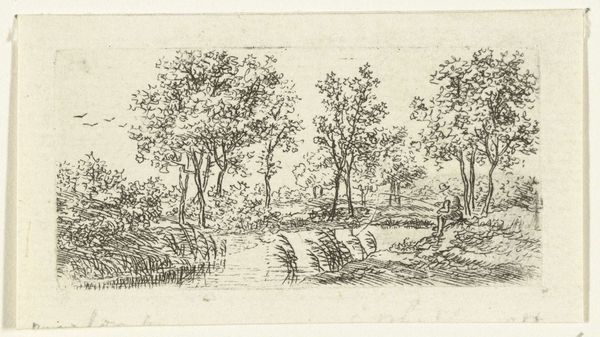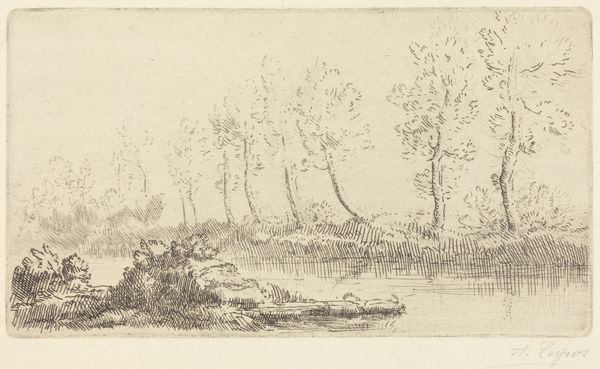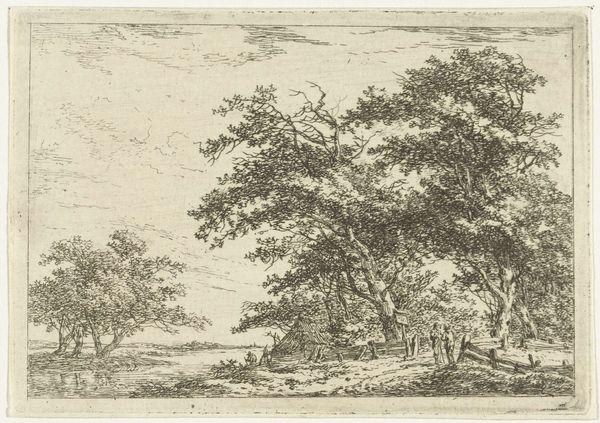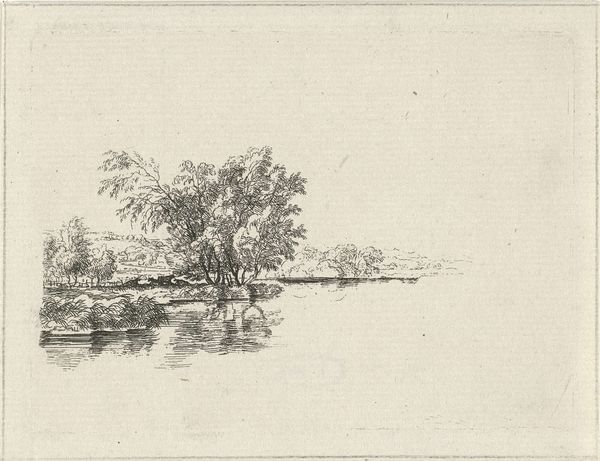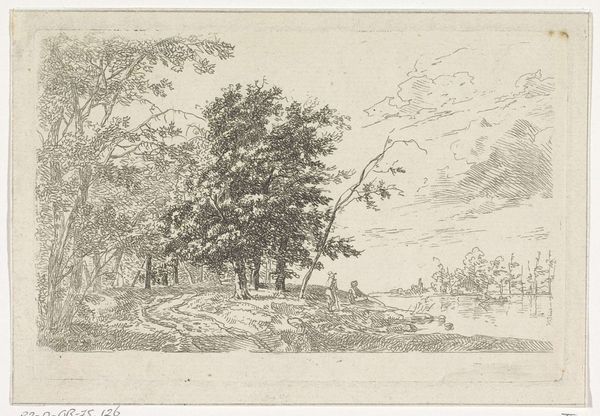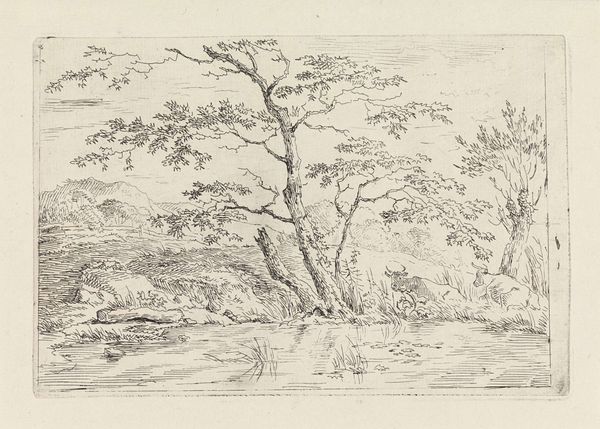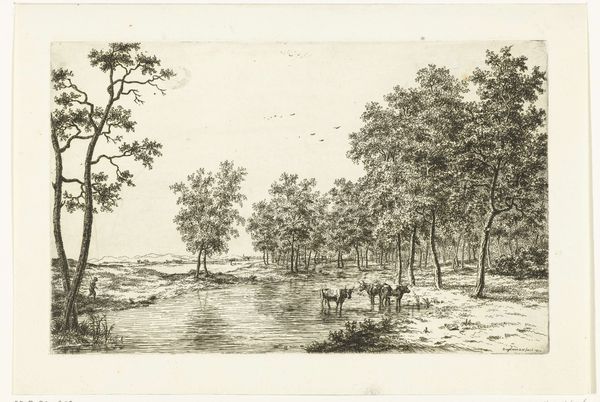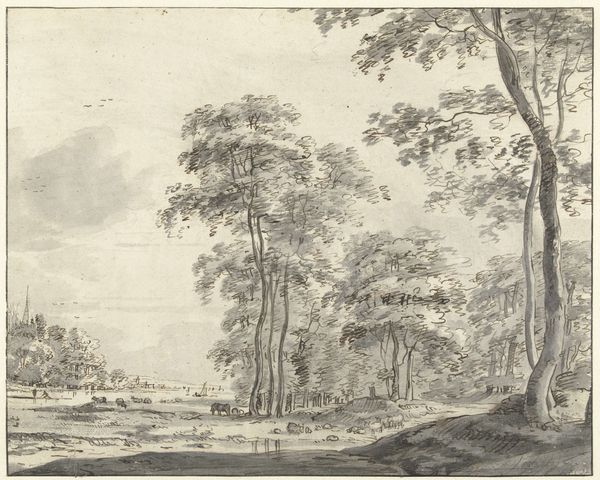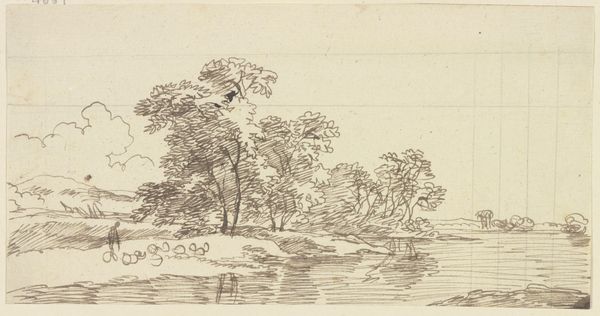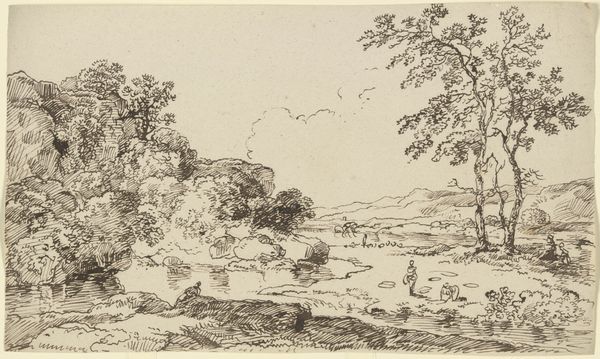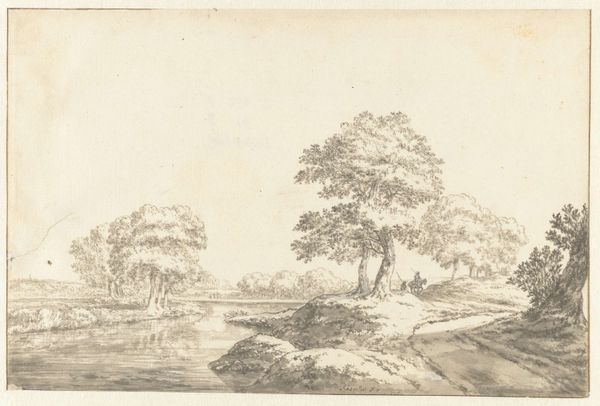
drawing, paper, ink
#
landscape illustration sketch
#
drawing
#
mechanical pen drawing
#
pen illustration
#
pen sketch
#
landscape
#
paper
#
personal sketchbook
#
ink
#
sketchwork
#
pen-ink sketch
#
line
#
pen work
#
sketchbook drawing
#
storyboard and sketchbook work
#
realism
Dimensions: height 33 mm, width 63 mm
Copyright: Rijks Museum: Open Domain
Editor: This drawing, titled *Landschap met rivier en bomen*, which translates to 'Landscape with river and trees', is by Ernst Willem Jan Bagelaar, dating sometime between 1798 and 1837. It's an ink drawing on paper, a rather understated landscape. What strikes you most about this piece? Curator: Given the period, what interests me is how Bagelaar approaches landscape. We see this at a time when landscape art was becoming increasingly tied to national identity. Artists often depicted grand, picturesque scenes, reinforcing ideas about national pride and ownership of the land. Does this delicate, rather intimate portrayal, challenge that trend, perhaps offering a counter-narrative? Editor: That's a great point. It does feel much more personal and less about grandstanding. Maybe it's intended as a simple study? Curator: Exactly! The “sketchwork” tag really supports that idea. If it *is* a study, then it represents part of a longer artistic process, not necessarily meant for public display. The existence of a "personal sketchbook", as another tag suggests, complicates its relationship with a viewing public and institutional display. Editor: So, how does this private nature potentially affect how the piece was received, or *would* be received, back then? Curator: A landscape intended as a private reflection wouldn't carry the same political weight or be subject to the same scrutiny as a publicly exhibited artwork. Its "realism" allows it to avoid being overly didactic, but then it also forfeits having as broad an influence on the visual culture of the time. Editor: That makes a lot of sense. So, the intended audience really shapes the meaning of the work. Curator: Precisely. And even its display here, in our collection, adds yet another layer of interpretation and assigns a certain value to it that might have never been considered back in Bagelaar’s time. It’s really fascinating. Editor: I’ve learned so much. Thanks for illuminating the historical context!
Comments
No comments
Be the first to comment and join the conversation on the ultimate creative platform.
